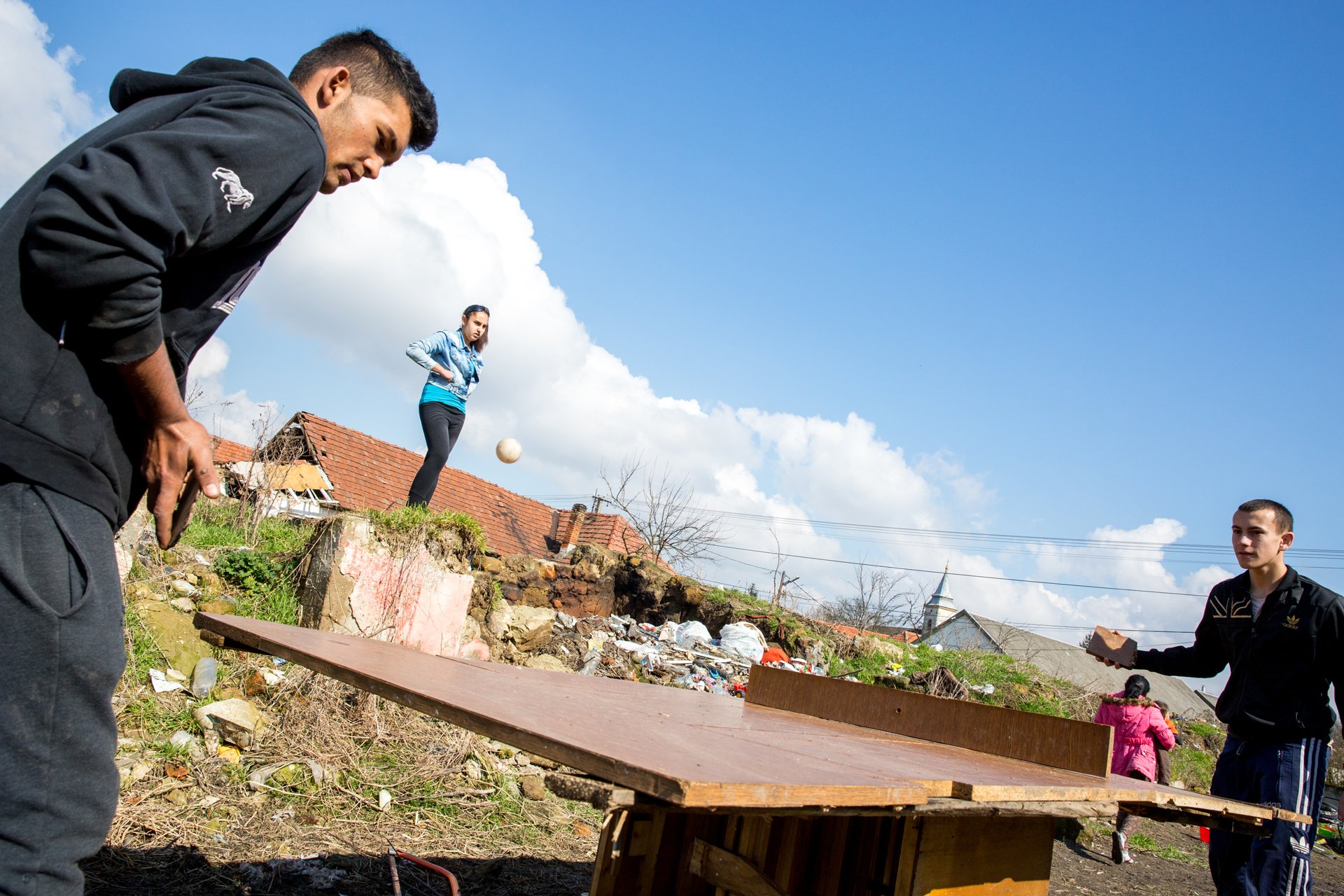
By Courtney Pedroza / Cronkite Borderlands Project
Published July 11, 2016

At the Sajokaza Roma ghetto in Hungary, Klaudya Cispkés, 16, stands on top of garbage to see her boyfriend Janos Ruszó Kálmán, 19, and his friend Gergő Horvát, 17, play ping pong with scraps of wood. Much of the Roma community is segregated in ramshackle communities like this one. The Roma, Hungary’s largest ethnic minority, have high unemployment, low educational levels and a long history of being discriminated against in central and eastern Europe.
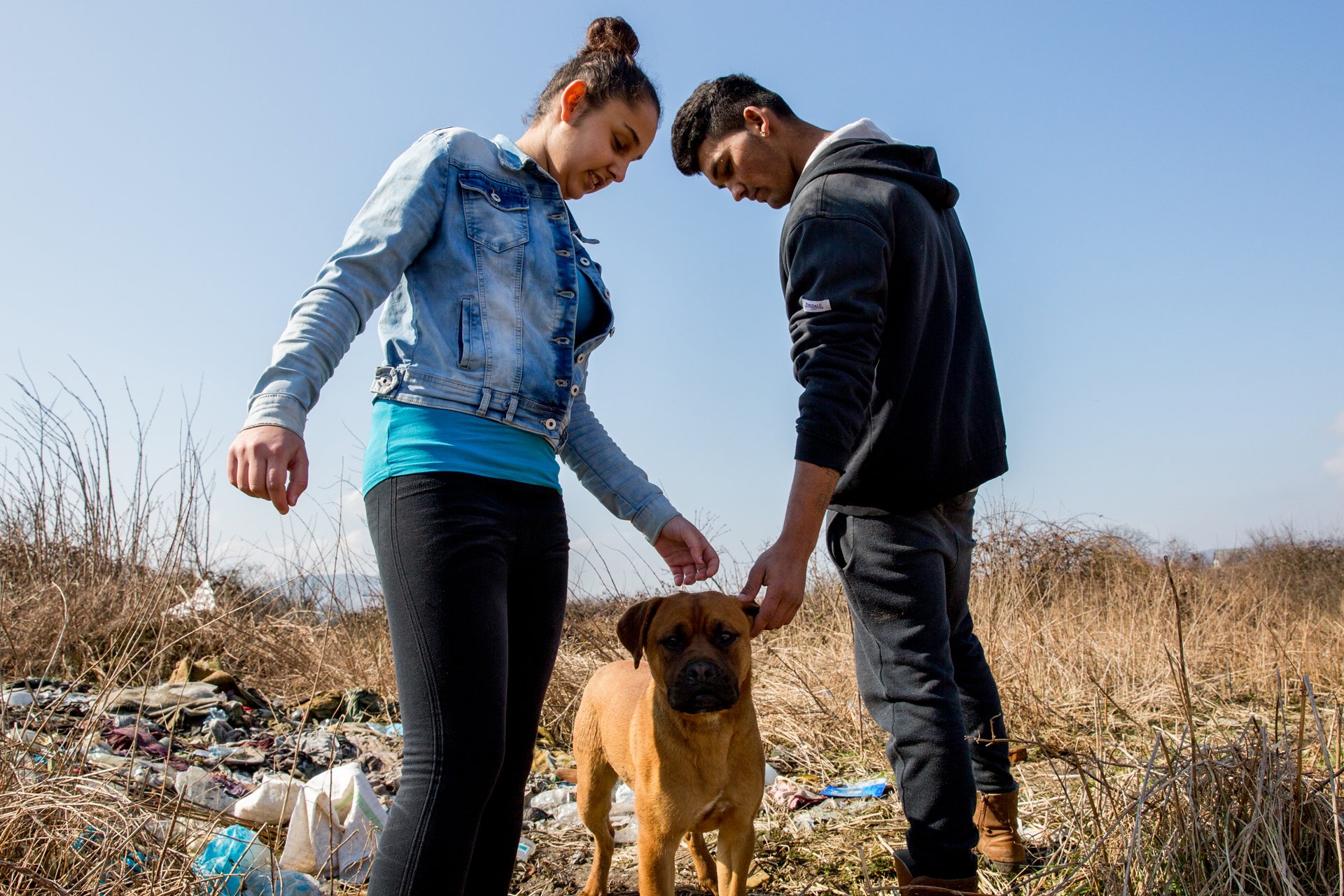
Klaudya Cispkés and Janos Ruszó Kálmán pet his dog amid garbage strewn about. Cispkés will drop out of secondary school in September to attend cashier trade school in hopes of gaining a job soon. But completing cashier trade school is no guarantee of finding work; the vast majority of Roma in Hungary are unemployed and many face job discrimination. Her mother, Ágnes Cispkés, describes her daughter as the smartest of her children but the most stubborn, and wants Klaudya Cispkés to go onto better things than dropping out of school like she did years ago.
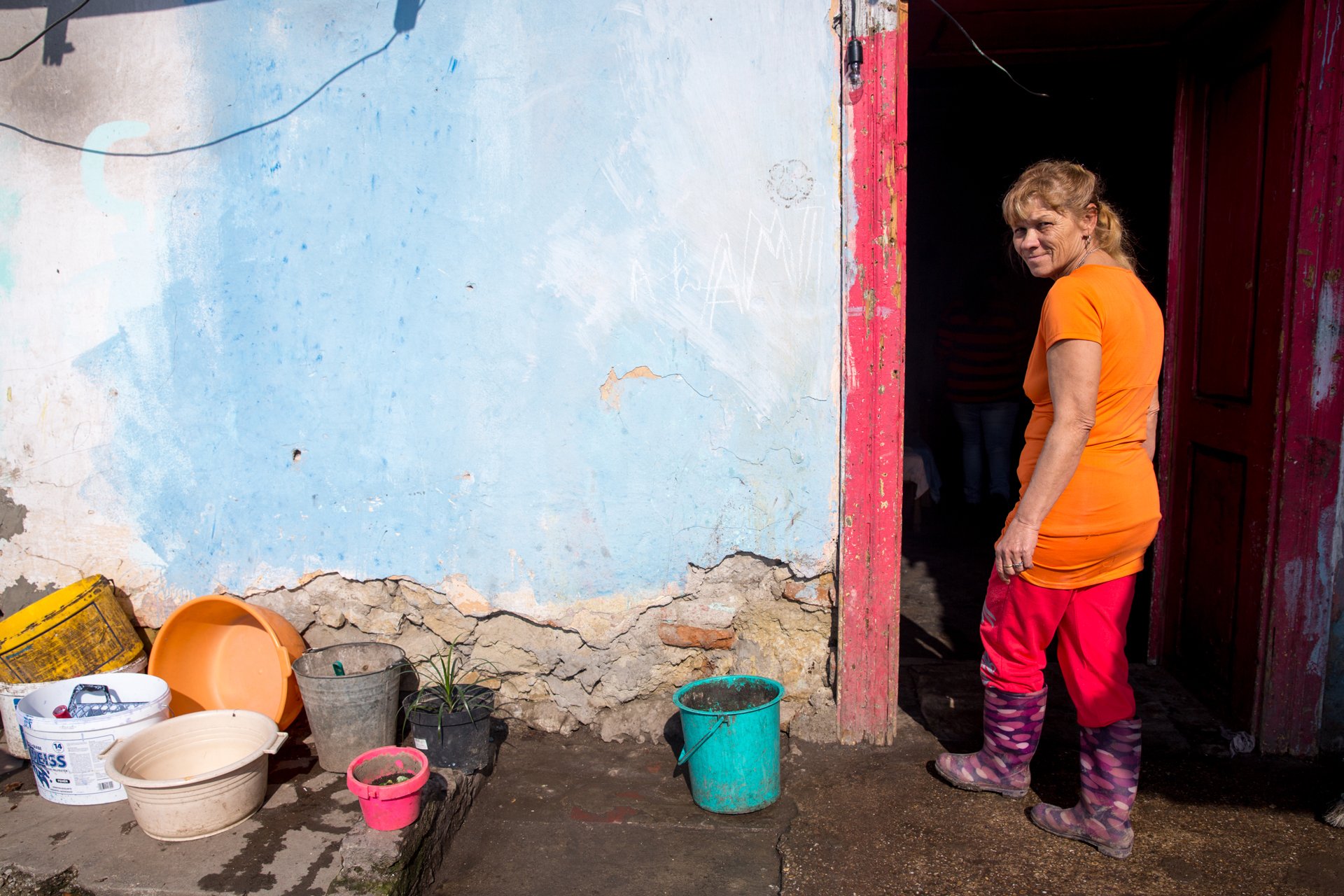
Editt LaKatos looks back while entering her neighbor’s house. The houses are small and in many, a dozen or more extended family members sleep in a single room.
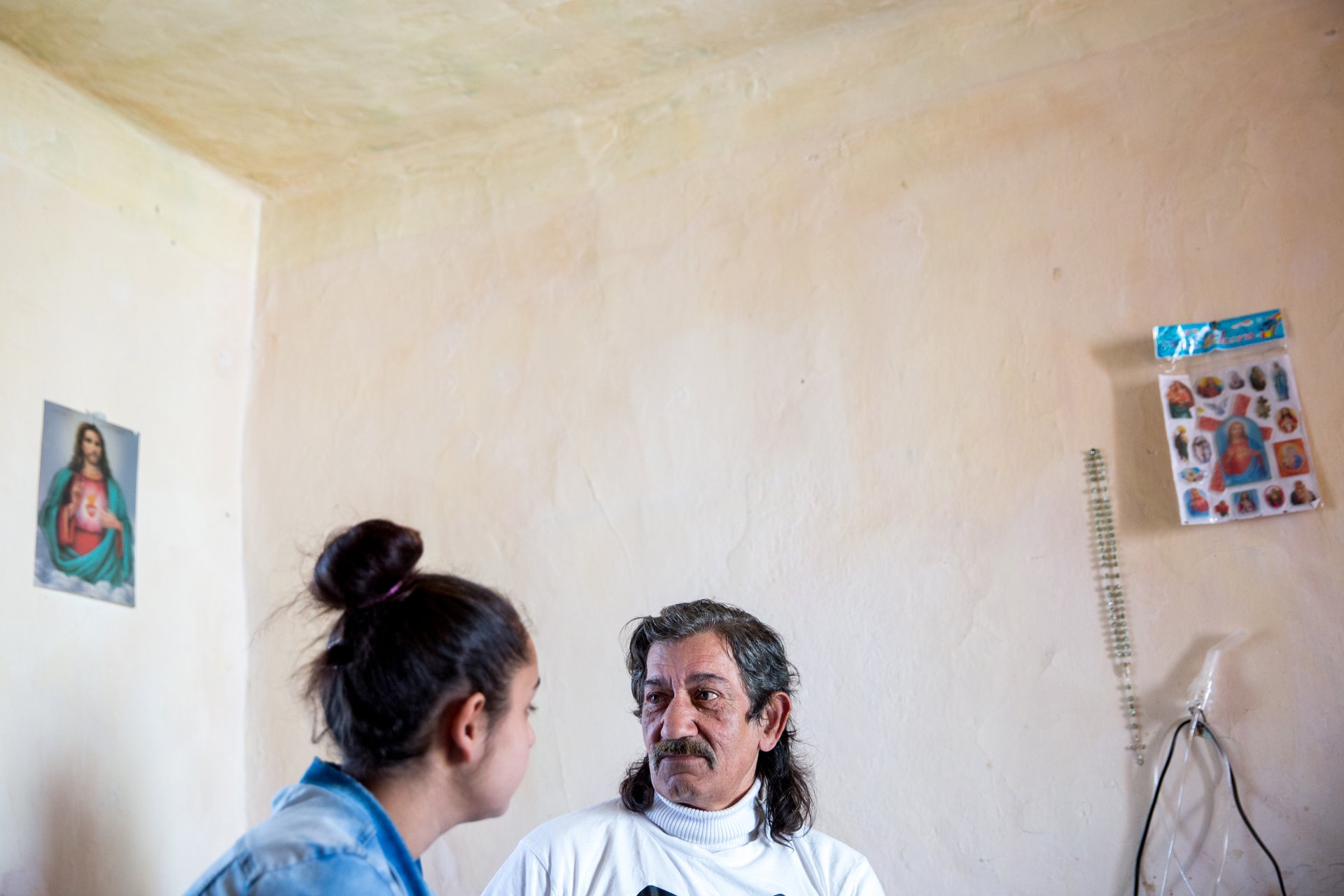
Klaudya Cispkés (left) speaks with Sàwdor Vàradi (right) in his home, where a rosary, Sacred Heart of Jesus picture and other symbols of Catholicism, Hungary’s dominant religion, hang on the wall.
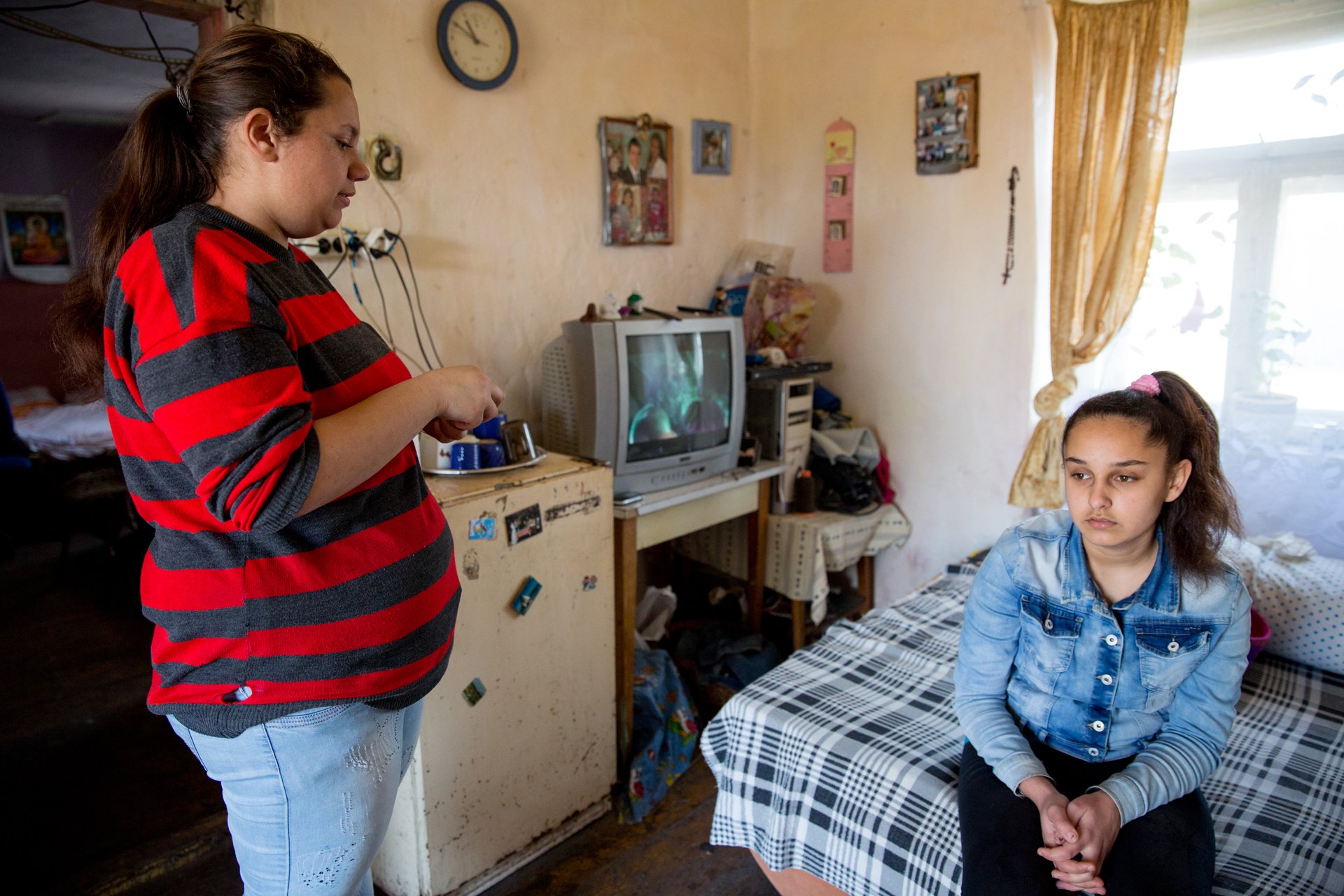
Best friends and students at the Dr. Ambedkar School, Bianka Galyas (left) and Klaudya Cispkés (right) speak as an American pop music video — Timber featuring Ke$ha by Pitbull — plays on television. Unlike Cispkés, Galyas plans to graduate and become a pediatric nurse.
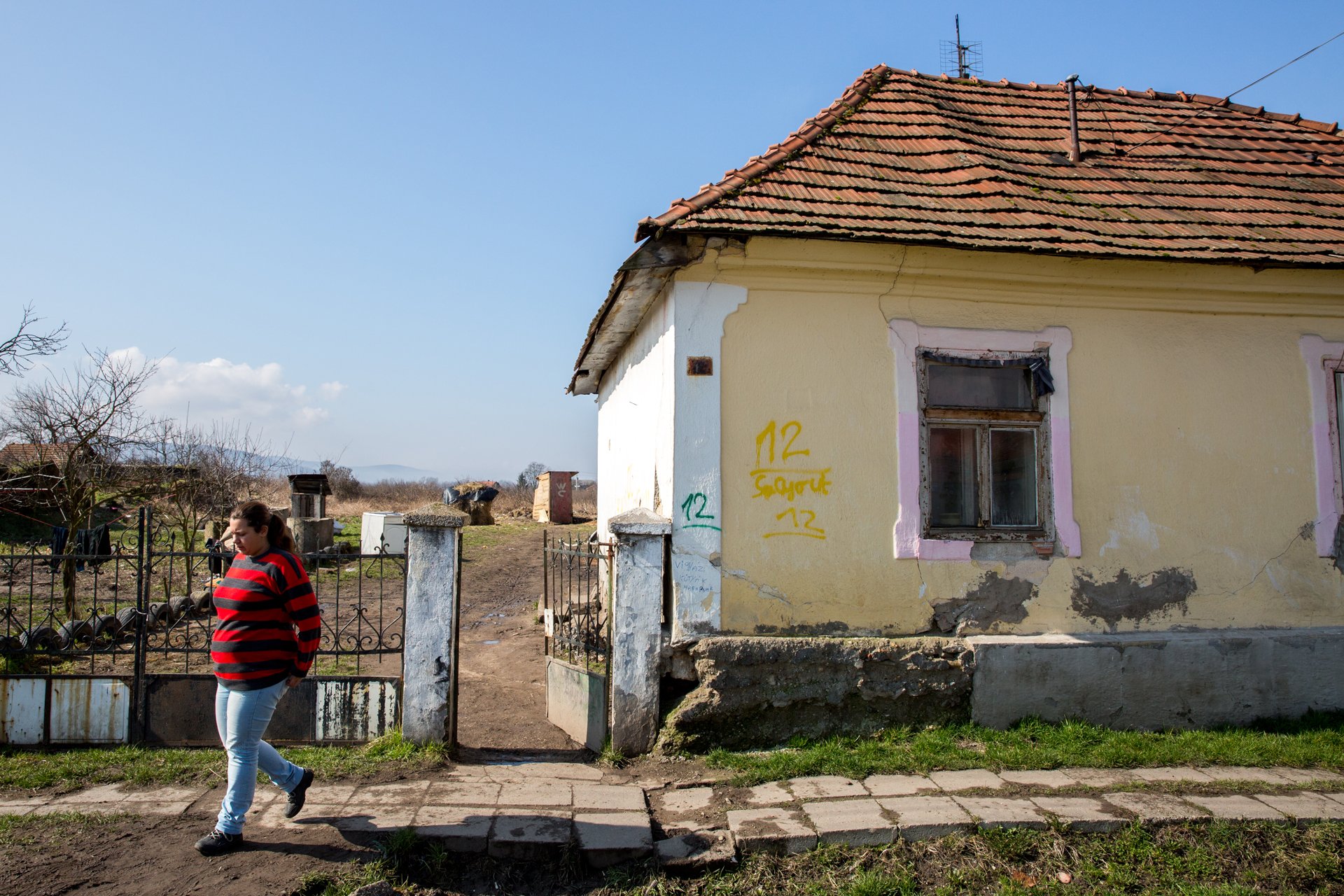
Galyas exits her house. At the Dr. Ambedkar School, she participates in media extracurricular activities, where she is acting in and producing a movie. Galyas wishes to be a photojournalist but has put that goal aside for something she sees in reach.
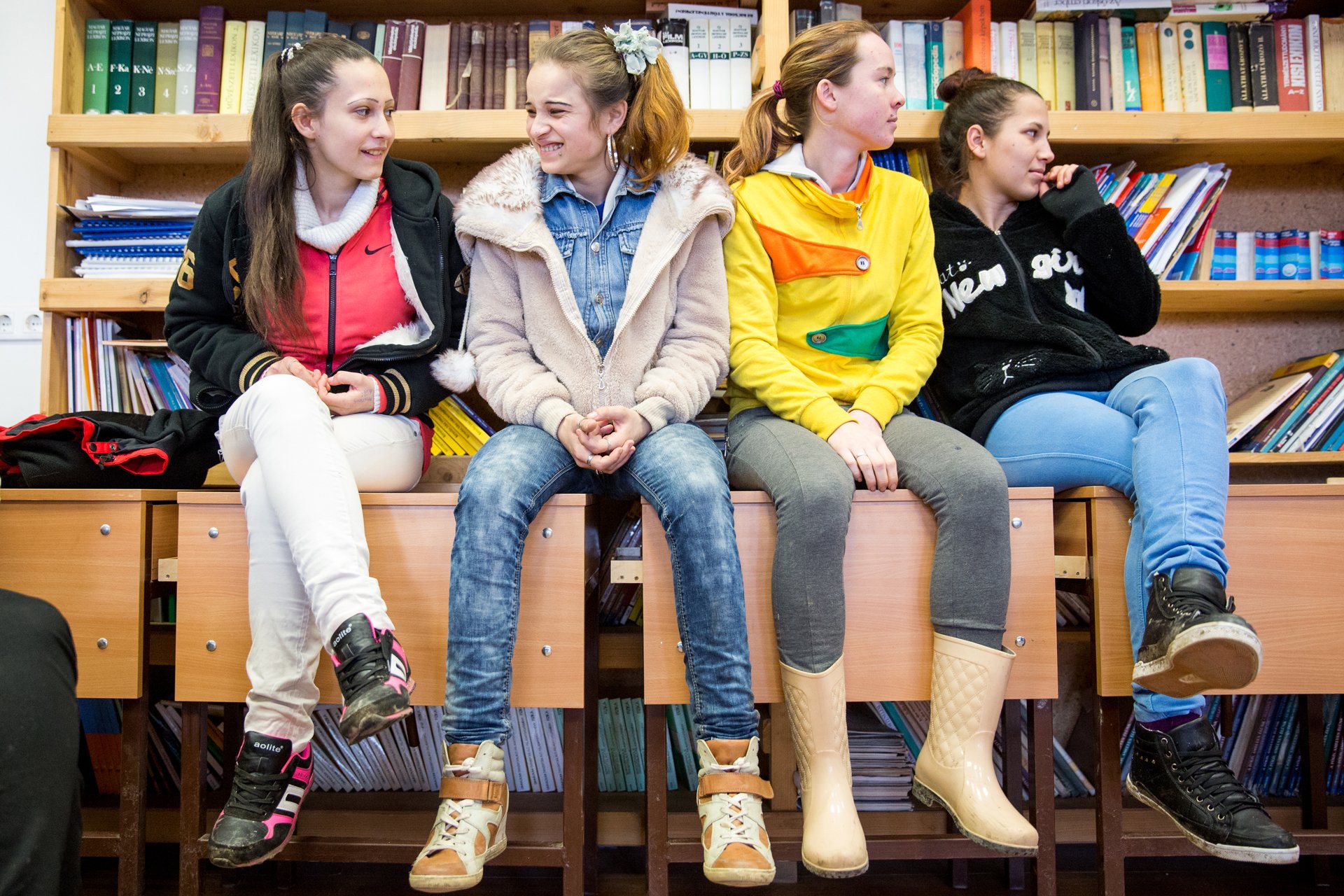
Female Roma students laugh and watch as their male classmates sing to them for International Women's Day, on Tuesday, March 8, 2016, at the Dr. Ambedkar School. Prior to the secondary school’s inception in 2007, only two Roma students in the area had completed secondary education; since then 35 students have passed all exams and 59 passed some of the exams.
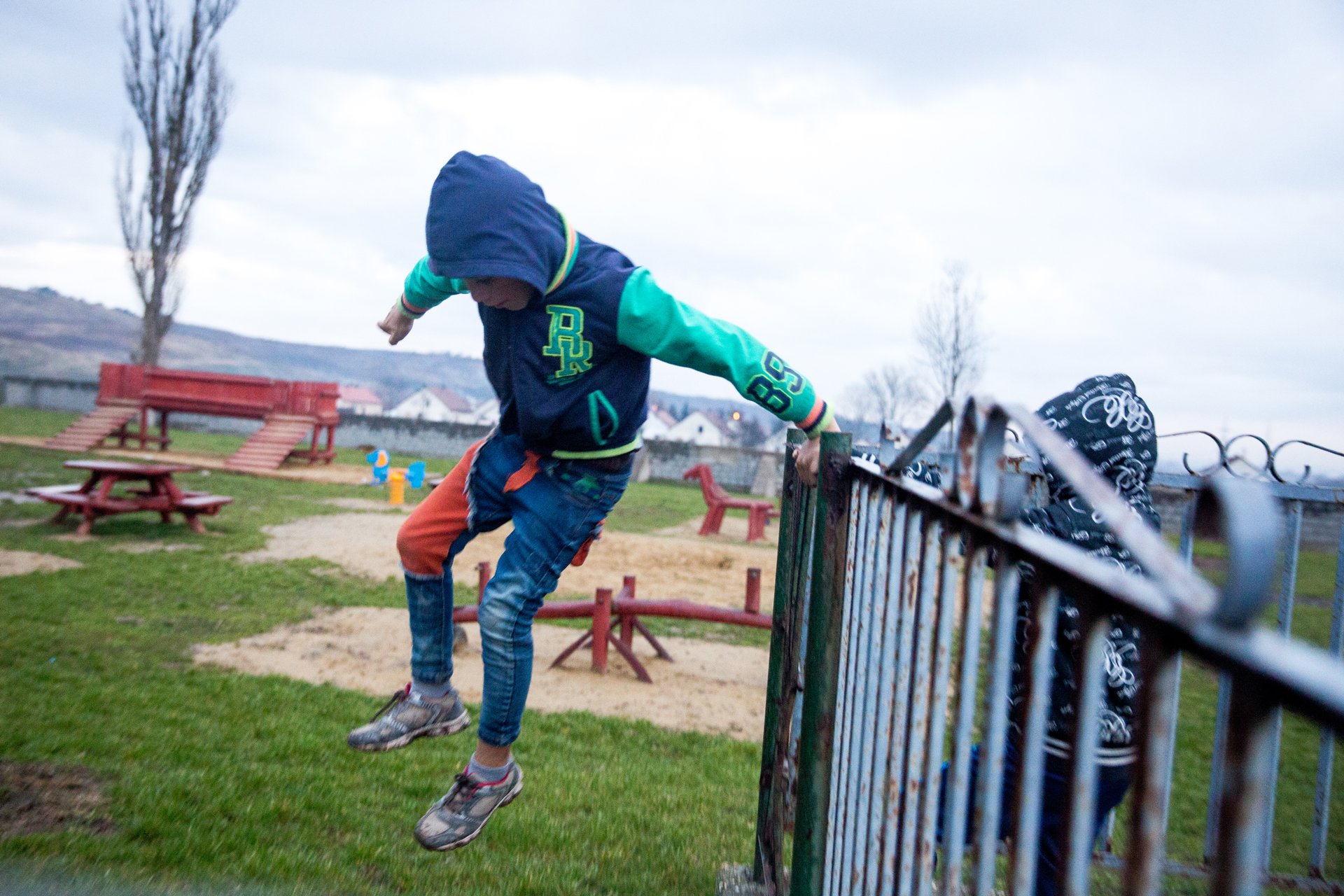
A Roma boy hops the fence into a playground across from the Dr. Ambedkar School. After school, the children do not have many places to play.
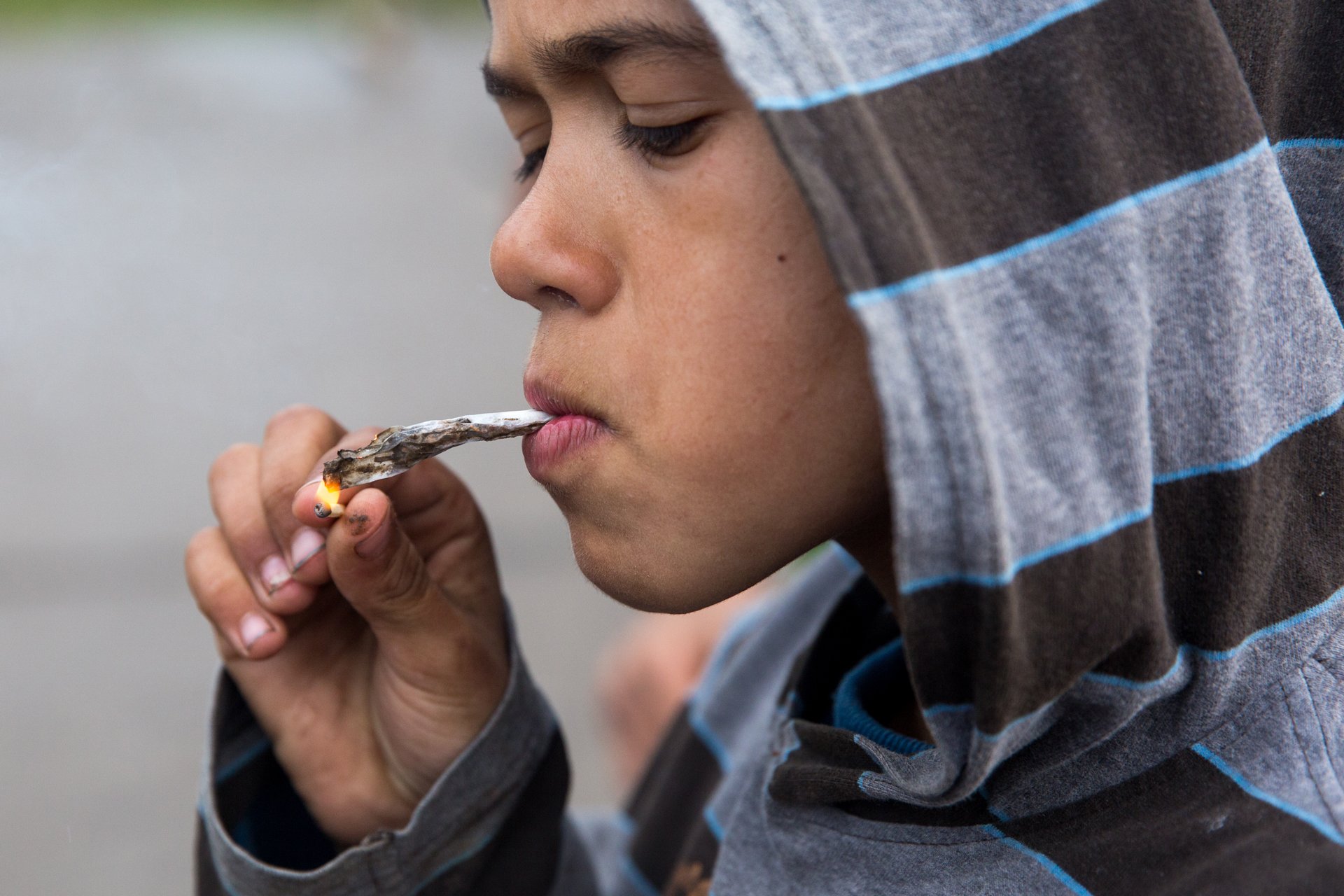
A primary school age Roma boy lights a cigarette while his friends play soccer at the Dr. Ambedkar School. The kids can not buy cigarettes nor does the school condone smoking, but the younger boys find old cigarette butts on the ground, take the tobacco out and roll new cigarettes.
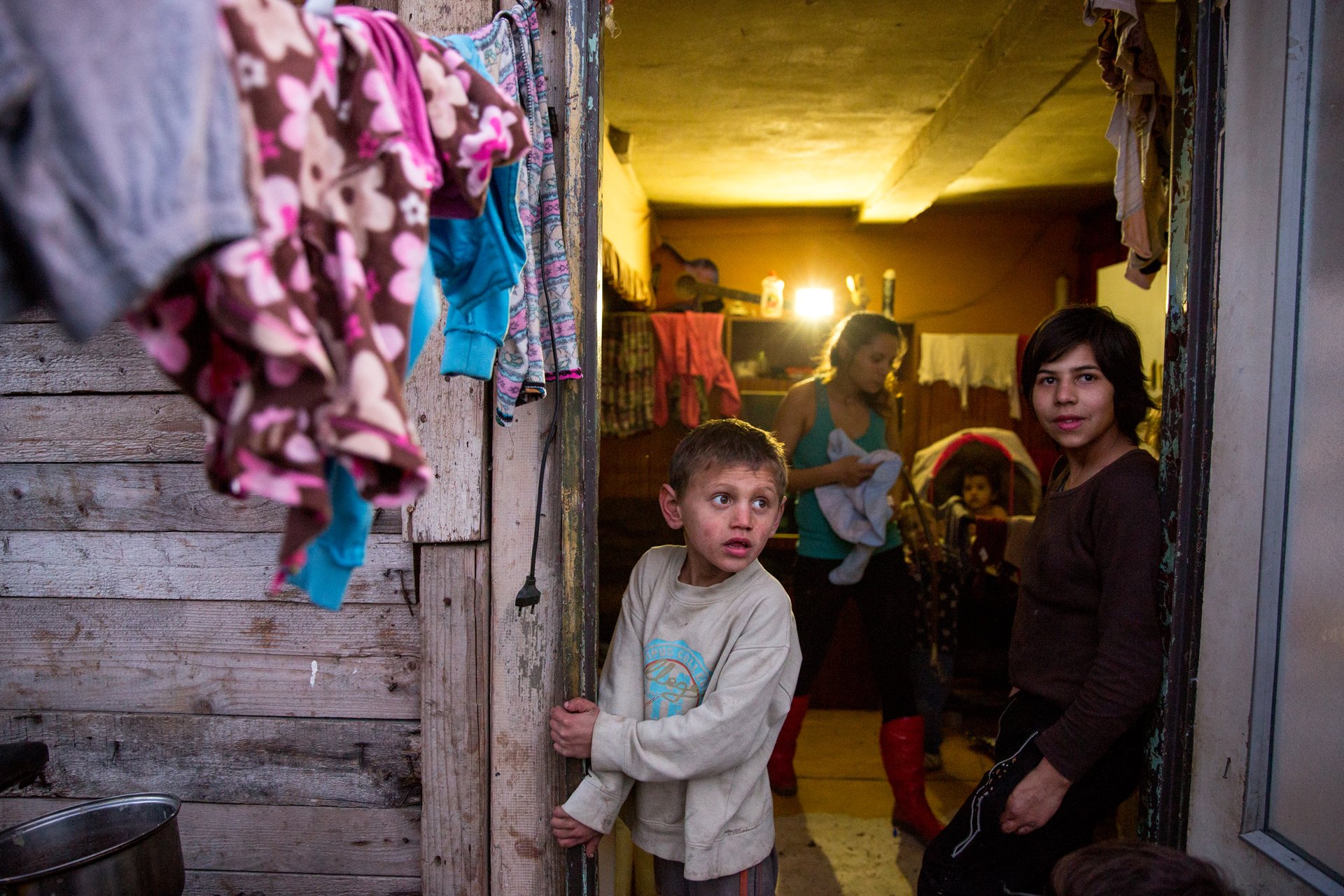
A young Roma boy looks outside to a litter-strewn village in Slovakia where approximately 800 Roma live. This ghetto is a two-hour drive from the school in Sajokaza, Hungary, and is close to the open border between Hungary and Slovakia.
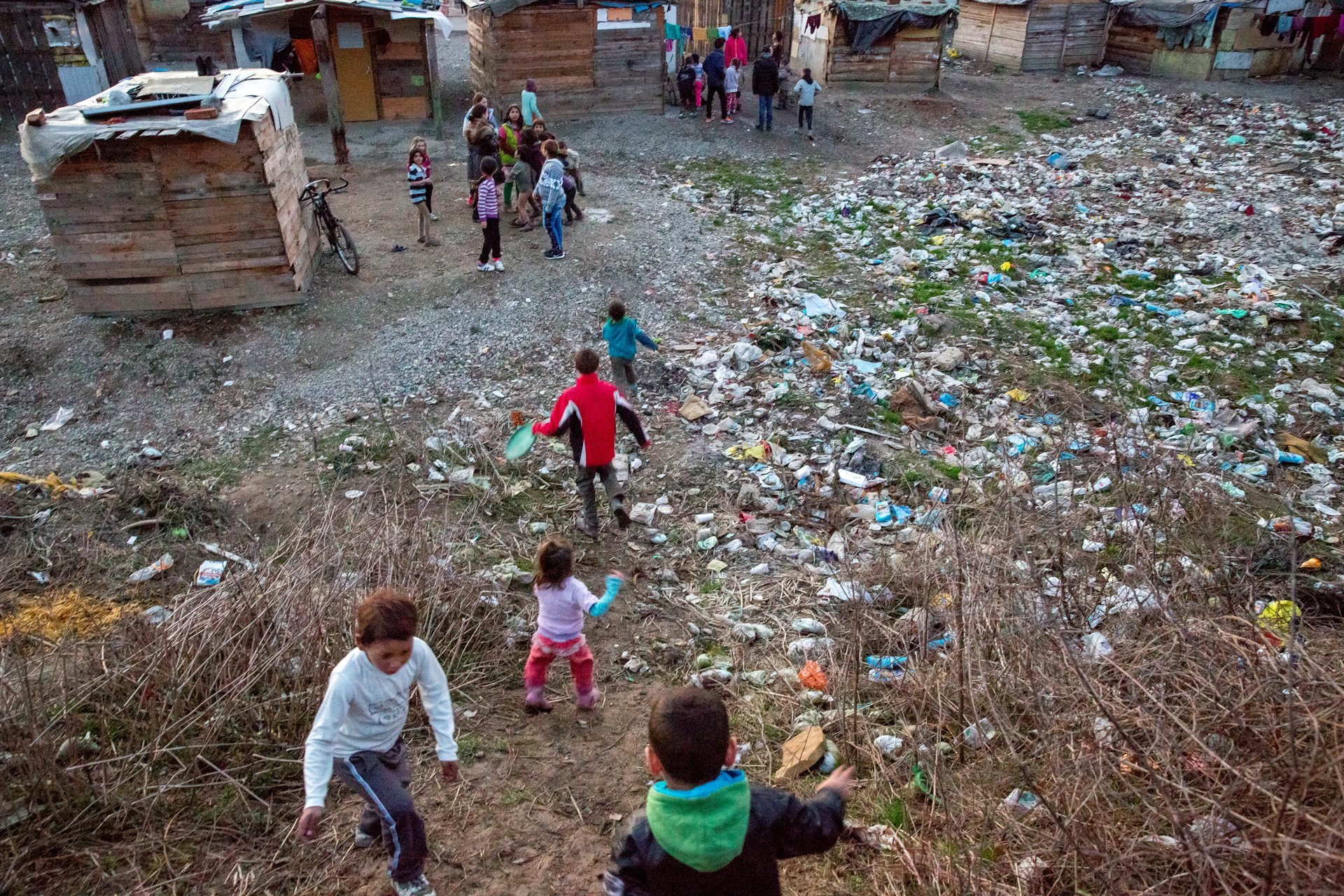
Kids run and play next to the trash in the Slovakian village. Two years earlier, a European Union funded grant paid for the removal of the garbage but since then trash has piled up again.
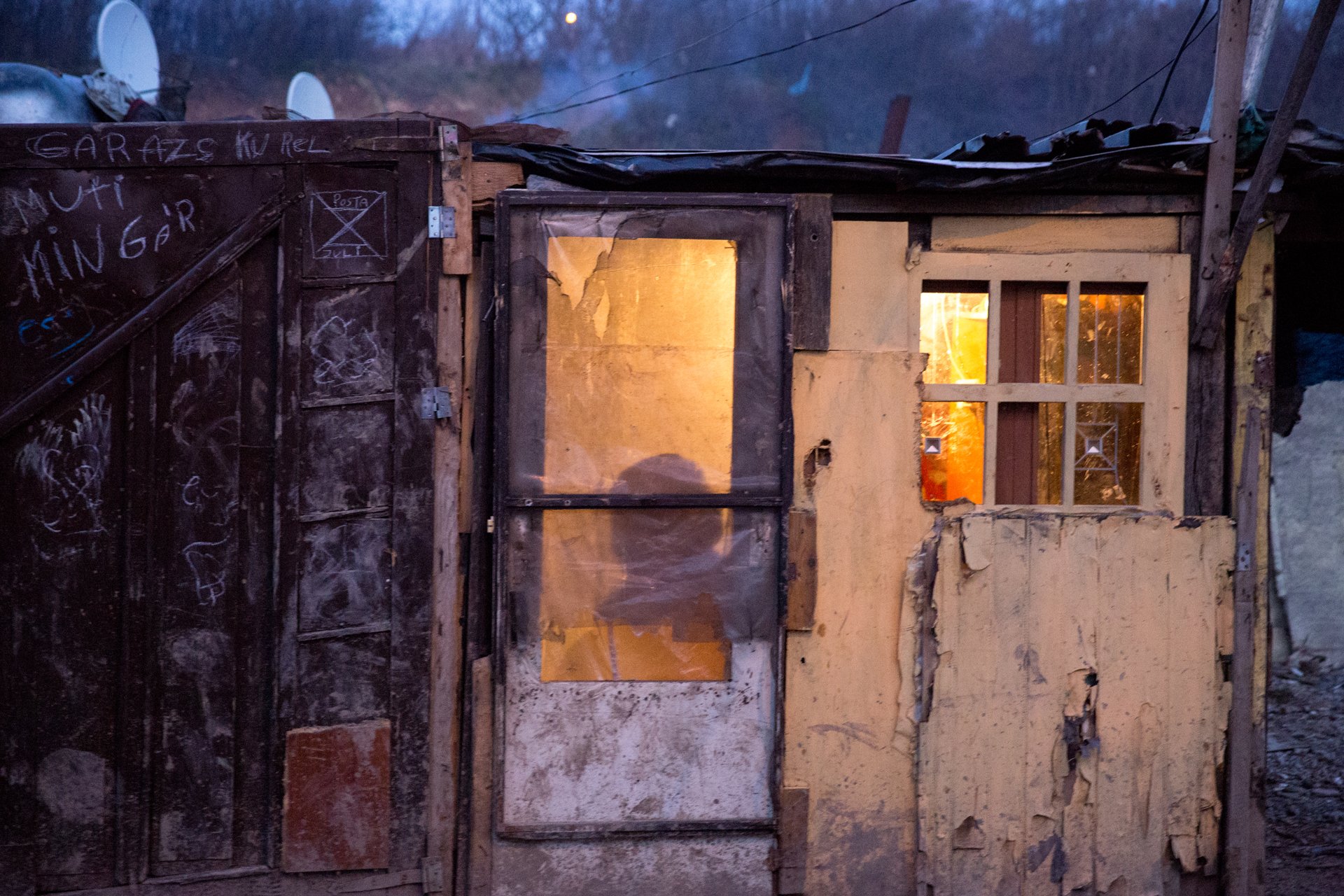
Whenever families expand and a new home is needed, the community comes together to build one out of whatever materials they have available. Up to 20 people live in the huts at once.

Two boys fight over a toy while a girl stands quietly next to them. The children do not have many toys so they often play together. The kids are in primary school because of government mandate but only one person from this village has ever made it to secondary education.
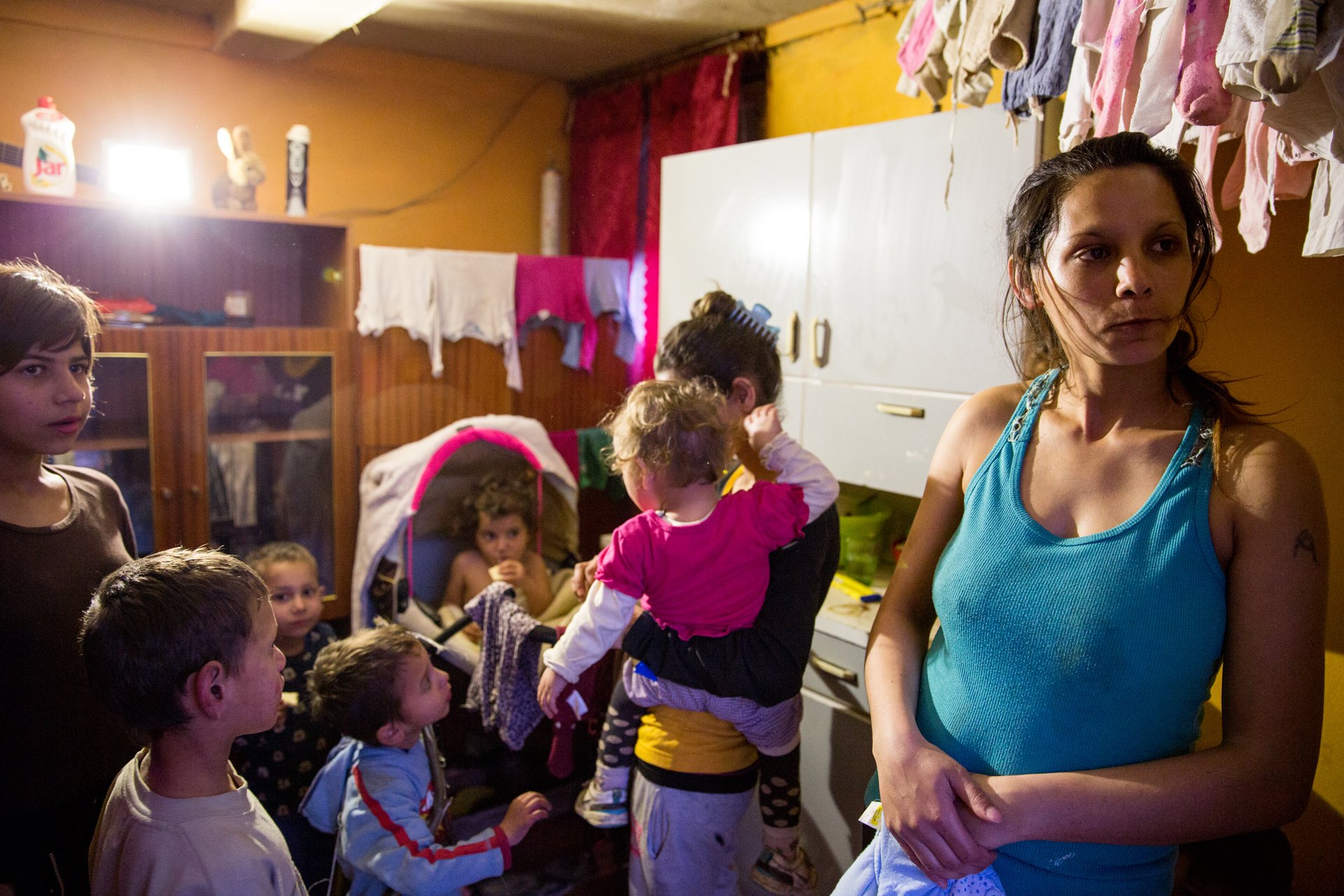
Andra Rybárová, 20, stands in her home with friends and some of her four children. Many families live in crowded quarters with no privacy and as a result children become informed about sex at young ages. Some children start having sex at age 8 and kids of their own at age 12, according to residents.

A boy stands in the doorway of a crumbling Soviet Union-era housing complex where villagers now live. To keep warm, a fire was built in the next room because electricity is scarce and the temperature on this day in March 2016 was under 40 degrees Fahrenheit.
Buffett student projects include: Nicaragua: Channeling the Future | Chiapas: State of Revolution | Two Borders | Puerto Rico: Unsettled Territory | Stateless in the Dominican Republic | South Africa: At the Crossroads of Hate and Hope | South Africa Documentary | Borderlands Photo Essays | Divided Families (PDF) | Divided Families Documentary | Children of the Borderlands | South Africa Project
Cronkite News is the news division of Arizona PBS. The daily news products are produced by the Walter Cronkite School of Journalism and Mass Communication at Arizona State University.